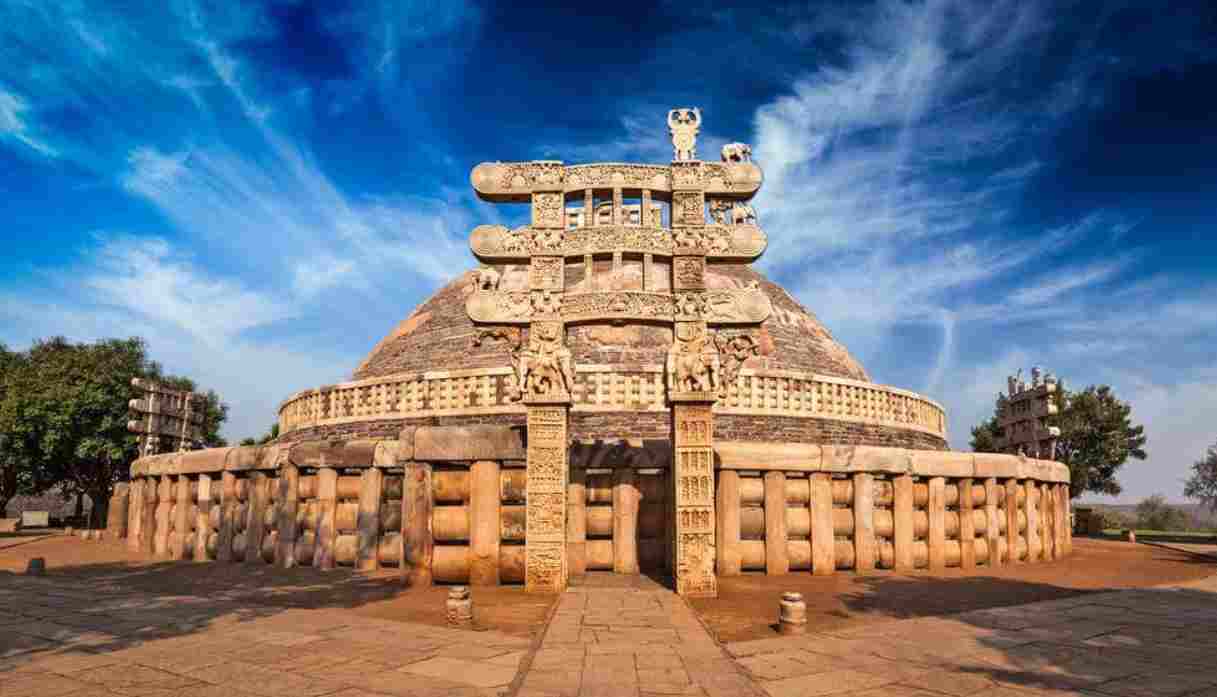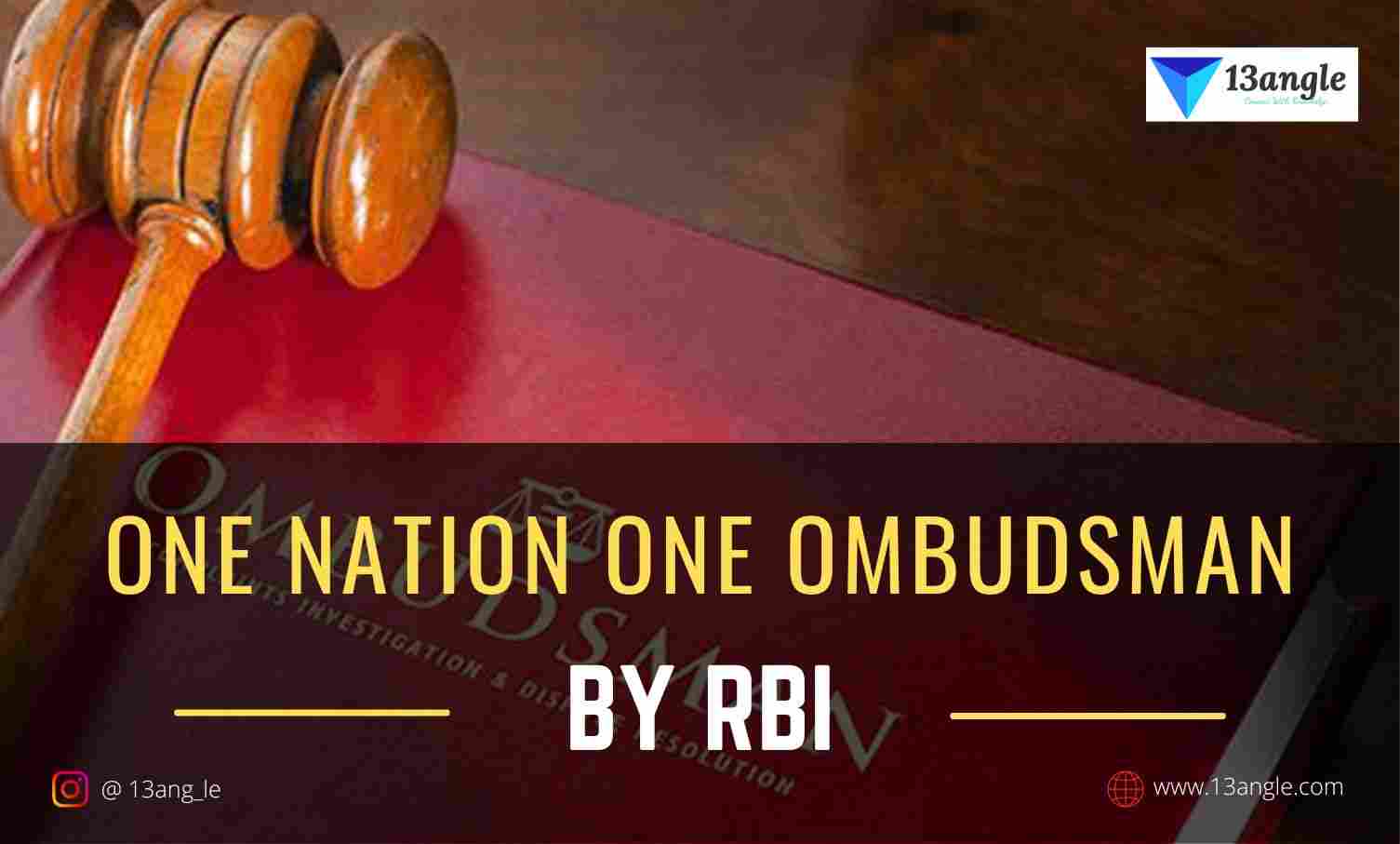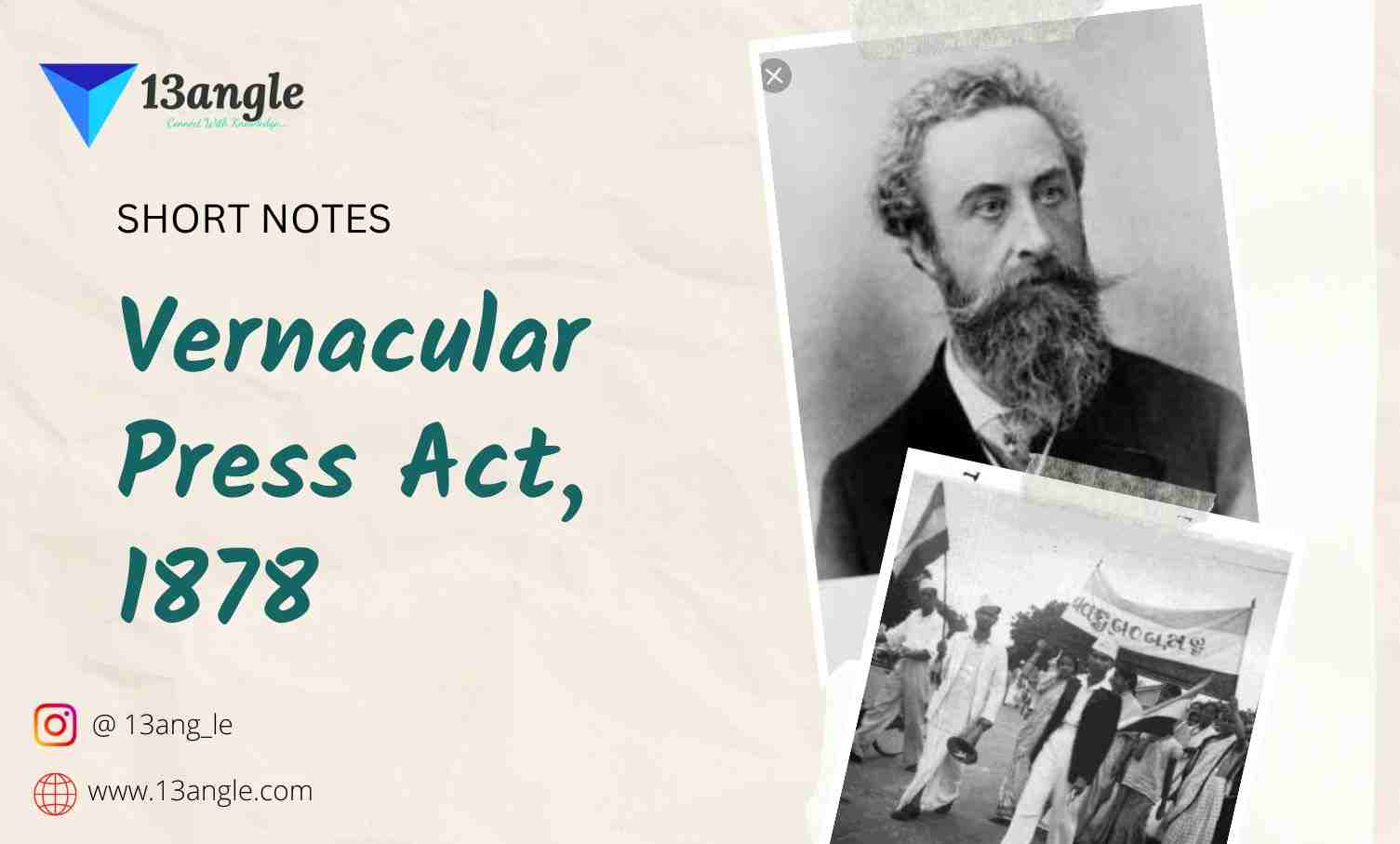
The Mauryan kingdom in ancient India was centered in Pataliputra (later Patna), which was close to the meeting point of the Son and Ganges (Ganga) rivers.
It was the first empire to encompass most of the Indian subcontinent and existed from roughly 321 to 185 BCE.
The empire emerged after Chandragupta Maurya filled the gap left by Alexander of Macedon’s departure from India’s western borders. After that, he ousted the Nandas and established the Mauryan Empire as the dominant power.
At its peak, the empire included parts of modern Iran and nearly the whole Indian subcontinent, with the exception of the southern peninsular point.
The monarchy of the Mauryan empire is effective and well-run, and it has civil service and a standing army.
The Mauryan empire was split up into five main governmental centers, each of which was positioned in a strategic manner. Taxila and Ujjayini, for example, were to continue to develop trade networks, while Suvarnagiri (literally “golden mountain”) was projected to be critical for accessing Karnataka’s gold mines.
The Mauryans had a powerful army.
They mention six different military coordination committees, each with six subcommittees. The first was in control of the army, the second over transportation and food, the third over regular soldiers, the fourth over horses, the fifth over chariots, and the sixth over elephants.
Religion:-
Hinduism, Jainism, Buddhism, Ajivikism, Greek polytheism, Zoroastrianism (northwest).
Common languages:-
- Sanskrit (literary and academic)
- Magadhi Prakrit (vernacular)
Mauryan Empire Kings (Samrats)
- 322–298 BCE- Chandragupta
- 298–272 BCE -Bindusara
- 268–232 BCE –Ashoka
- 232–224 BCE –Dasharatha
- 224–215 BCE –Samprati
- 215–202 BCE -Shalishuka
- 202–195 BCE –Devavarman
- 195–187 BCE -Shatadhanvan
- 187–184 BCE –Brihadratha
Chandragupta Maurya (322BC-298BC)
At the age of twenty-five, Chandragupta Maurya, the founder of the Mauryan empire, succeeded to the Nanda throne.
Chanakya was his Guru.
Chandragupta Maurya began preparing men and resources for the battle to assault Magadh on Chanakya’s advice.
Chandragupta Maurya devised a cutting-edge scheme to subjugate the Nanda Empire.
He engaged his warriors in combat on the battlefield, keeping the Dhana Nanda soldiers occupied. On the other side, he planned a revolt in the Nanda Kingdom by collaborating with its dishonest military leaders.
Chandragupta seized the neighbouring states, assembled an army, invaded the hated Magadha kingdom, and assassinated its despotic monarch.
The Nanda Empire’s heir to the throne passed away during this uproar. This incident devastated the heart of the reigning monarch, Dhana Nanda, who made the decision to abdicate. Then he gave Chandragupta Maurya control of his authority. Thus, in the year 322 B.C., the Nanda Dynasty’s rule came to an end, and the Mauryan Empire was established.
During his rise to power, Chandragupta got assistance and counsel from his Guru Chanakya, who wrote the Arthashastra, a textbook on monarchy and government.
During the last few years of the Nandas’ rule, Chandragupta profited from their waning popularity.
He ousted the Nandas and established the Mauryan Empire as the dominant power.
In 305 BCE, the Seleucids, a dynasty vying to inherit Alexander’s legacy, tried to march into India. However, they were vanquished, and upon the signing of a treaty, the Seleucids and the Mauryans kept amicable ties.
According to Ashoka inscriptions, Jain writings, and Sangam literature, Chandragupta Maurya conquered Southern India. He established dominance over the north Karnataka region.
According to Jain sources, Chandragupta converted to Jainism towards the end of his life and abdicated the crown in favour of his son. He is supposed to have travelled to Sravana Belgola in Karnataka with the aid of Bhadrabahu, a Jain saint, and numerous other monks.
Bindusara
Bindusara was the son of Chandragupta, the Mauryan Empire’s founder.
Bindusara took the throne in around 297 BCE. When he was only 22 years old, Bindusara inherited a vast empire that included sections of what is now Northern, Central, and Eastern India, as well as portions of Afghanistan and Baluchistan.
Bindusara expanded this dominion throughout southern India, all the way to what Karnataka is now. He subjugated sixteen nations to the Mauryan Empire and conquered the “country between the two oceans” — the peninsular region between the Bay of Bengal and the Arabian Sea).
The friendly Chola kingdoms of King Ilamcetcenni, the Pandyas, and the Cheras in Tamil Nadu were not conquered by Bindusara.
The only kingdom in India outside of these southern provinces that was not a part of Bindusara’s dominion was Kalinga (modern-day Odisha).
All throughout his rule, Chanakya remained the prime minister. The Tibetan scholar Taranatha, who traveled to India in the middle ages, claimed that Chanakya had assisted Bindusara in “destroying the nobles and kings of the sixteen kingdoms and becoming an absolute master of the land between the eastern and western oceans.”
Taxila’s people revolted twice during his reign. Susima, his eldest son, was responsible for the first revolt. The reason for the second revolt is unknown, but Bindusara was unable to put it down during his lifetime. After Bindusara’s passing, Ashoka smashed it.
Bindusara maintained cordial diplomatic ties with Greece. Deimachus was the Seleucid emperor Antiochus I’s ambassador at the court of Bindusara.
Bindusara is credited with making several grants to Brahmin monasteries.
Ashoka (273BC – 232BC)
He was Bindusara’s son. Ashoka had shown tremendous potential in the field of administration since his childhood.
Bindusara appointed him governor of Ujjain/Avanti after being impressed by his skill and knowledge.
After ascending to the throne, Ashoka fought only one battle, the Battle of Kalinga. The 13th Major Rock Edict mentions this conflict. In 261 BC, during his eighth year of rule, Ashoka engaged in this conflict.
The bloodshed in this war had a profound effect on Ashoka, transforming him from a warrior to a saint, because of which he abandoned the Digvajaya policy and adopted the Dhammavijaya policy.
Ashoka put the tenets of ahimsa into practice by outlawing sports like hunting and putting an end to forced labour and indentured servitude.
Initially, Ashoka practised the Brahmin religion. He became a Buddhist after the Kalinga war.
He remained a simple adorer for 2.5 years after embracing Buddhism. He then joined a Buddhist sangha and was ordained as a Bhikshu Gatik (those who lived for some time in viharas are known as Bhikshu Gatik). But he never became a Buddhist monk, preferring to remain a devotee.
Ashoka considers Dhammavijaya to be his greatest victory in the 13th Major Rock Edict.
Ashoka was the first ruler in world history to implement the Dhamma imperialist victory policy without resorting to violence. He established a new category of ministers known as “Dhammamahamatra” to promote Dhamma.
Ashoka mentions the appointment of royal officials in his 5th Major Rock Edict in the 13th year of his reign (256 BC). In addition to Dhammamahamatras, other officials such as Yukta, Rajukka, Pradeshika, and others were tasked with spreading Dhamma principles. As a result, Ashoka is forever remembered as one of India’s great rulers.
In his inscriptions, Ashoka made a few good points about Dhamma, such as:
- No killing of humans.
- There will be no property destruction.
- Parents and adults must be served and respected.
- To be respectful of mentors and teachers.
- Excellent behavior with slaves and servants.
- To spend less money.
- To save fewer resources.
The Expansion Of The Mauryan Empire
After founding the Mauryan Empire in Pataliputra, Chandragupta Maurya embarked on the challenge of geographically expanding it. His attention was drawn to the westward expansion of its borders between 317 and 316 BCE. He began by seizing control of the Greek satraps Alexander had abandoned.
Alexander’s troops were ordered to leave the west bank of the Indus River by Chandragupta Maurya after Alexander’s death. As a result, the entire region of northwest India came under the rule of the Mauryan Empire.
Chandragupta embarked on an aggressive expansion policy.
Seleucos I Nicator, who was Alexander’s satrap for the eastern Macedonian conquests, was defeated and had to cede the entire territory under him to Chandragupta, along with a daughter and considerable money. He also sent Megasthenes, who wrote the Indica, to the Mauryan court as the Greek ambassador.
Chandragupta used marriage alliances, diplomacy, trickery, and war to extend his kingdom.
Under Chandragupta, the Mauryan empire stretched from eastern Iran to the western borders of the Burmese hills and from the Himalayan tribal kingdom to the southern plateaus of peninsular India.
After ruling for about 25 years, Chandragupta abdicated in favour of his son, Bindusara, and became a Jain monk.
Bindusara maintained his father’s large dominions efficiently and extended the southern borders to cover the peninsular plateau of India.
Bindusara, Chandragupta’s son, governed the Mauryan kingdom from 298 to 269 B.C. He concentrated his efforts in southern India, annexing territories in the Deccan region.
During Ashok’s rule from 269 and 232 B.C., the Mauryan Empire reached its pinnacle of splendor.
Ashok’s biggest accomplishment was conquering the Kalingas in the devastating Kalinga War, which was fought in 262-261 B.C.
The Decline Of The Mauryan Empire
Ashoka chose to stop all expansion attempts after being horrified by the enormous number of lives lost during the Kalinga War. Later, he adopted Buddhism and began promoting themes of nonviolence and peace.
After Ashoka’s passing, the Mauryan Empire started to deteriorate. Internal disputes over who would lead the Mauryan Empire next were ongoing.
Following Ashoka’s reign, the Empire fell for around 50 years before dissolving in 185 BCE because of Brihadratha’s murder by his commander-in-chief Pushyamitra Shunga and the establishment of the Shunga Empire in Magadha.
Trade & Business
The political unity and internal tranquility of the Maurya Empire aided the rise of trade in India.
The government oversaw the construction of significant roads during Ashoka’s rule, and the Mauryan network of trade extended internationally.
The conquest continued with Southeast Asian and Chinese nations after Kalinga, which had a harbor on the eastern coast of India, had been conquered.
The main export items included spices, pearls, gems, sandalwood, ivory, cotton fabric, silk yarn, muslin, and others.
Syria, Egypt, Greece, and other countries in the west were involved in external trade.
Further, an important aspect of the Mauryan economy was the state monopoly of mining and metallurgy. It was a source of great income.
The superintendent of mining was Akradhyaksha, whose duty was to prospect new mines and reopen old and disused ones.
Coins
Coins were known as Roop in the Arthashastra.
Other coin types included:
Suvarna/Nishaka: Gold coins.
Silver Karshapan, Dharan, and Pann coins
There were copper coins, or mashak/kakini.
There were state minting plants, and their director was referred to as Lakshanadhyaksha, according to the Arthashastra.
Rupdarshaka was renowned as a coin examiner.
Beginning in July, the Mauryan economic month
In addition to these, there were coins with punch marks.
These coins have a variety of designs punched into them, including snakes, peacocks, and trees.
The images on the coins were the only thing there; there was no writing or inscription.
The Mauryan Administration
The Mauryas set up a substantial administrative structure. The Arthashastra of Kautilya and Megasthenes’ Indica provide a thorough explanation of it.
King
- The king was the Supreme Commander of the Mauryan Armed Force and head of the state. He possessed executive, judicial, and legislative authority.
- The King coordinated military activities with the commander-in-chief as the army’s supreme commander.
- The king received assistance from his council of ministers, which was presided over by Mantriparishadadhyaksha.
Mantriparishadadhyaksha
- The Mantriparishada oversaw the government servants known as Adhyakshas or Amatyas, who maintained contact with all facets of society and created a highly capable secretariat organized into many divisions.
- Some of these departments and their Adhyakshas are listed below:
- Sannidhata (Royal Treasury)
- Akaradhyaksha ( Mines superintendent)
- Suvarnaadhyaksha (gold superintendent)
- Panyaadhyaksha (commerce superintendent)
- Kupyadhyaksha (forest officer)
- Lavanadhyaksha (Salt department)
- Sitadhyaksha (Agriculture)
Ministers
- The Parishad is the name of the ministerial council.
- The Mantrins and the Amatyas are the two categories of ministers that Kautilya mentions.
- The Parishad’s inner circle, which the Mantrins made up, was analogous to the current cabinet.
- The government created the policies, and the Amaytas implemented them.
- The king was directly responsible to the ministers for how they carried out their tasks.
Paura-Janapada
- The Paura Janapada was a gathering of residents from both the town and the countryside.
- In emergency situations, this assembly might ask the monarch for Anguttaras or favours.
- This gathering could engage in social activities and provide aid to the weak and underprivileged.
- The Paura Janapada served as a potent check on the power of the king.
Governor
- Each province had a governor or viceroy, who was occasionally a prince of royal lineage.
- The princes were referred to as Kumar Mahamatras when they were made viceroys, whereas the other viceroys were simply called Mahamatras.
- Provinces were further subdivided into Mandals (commissionaires), with Pradeshta as their Commissoners.
State Administration
- The four provinces that comprised the empire’s four capitals were Ujjain, Taxila, Kalinga, and Suvarnagiri.
- Each of these regions had previously been assigned to the prince, who was a member of the Mauryan dynasty. These provinces were once more divided into smaller subdivisions and governed.
- The districts were under Rajukas’ supervision, with Yuktas serving as his assistant.
- Gopa would have overseen ten to fifteen villages, while Grahmini oversaw village administration.
- Sagarika served as the city administrator. He was responsible for maintaining law and order.
District Administration/ Aahar/ Vishay
- Officers Pradeshika, Yukta, and Rajukka handled the administration of each.
- Rajukka was below Pradeshika in the hierarchy of power. Both had authority over Yukta.
- Pradeshika had the responsibility of visiting the kingdom every five years to gather information about the government.
- In the districts, Sthanikas and Gopas with their own staff of officials handled the revenue and general administration.
- The Gopa oversaw five to ten villages, where he kept an accurate census of the populace and their material possessions, oversaw the upkeep of boundaries, documented gifts, sales, and mortgages, and registered gifts, sales, and mortgages.
- The Gopa had to work under the Sthanika because they both had identical responsibilities in the district that was under his supervision.
- The Sthanikas answered Samaharta, who ordered the assistance of Pradeshtris—identical to the Pradeshikas of the Ashoka inscription—for the oversight of the local government.
City Administration
- The Arthashastra mentions Nagarka, who acted as a city superintendent or a city magistrate with the help of other authorities.
- Nagaoka was tasked with duties like providing water to city residents, maintaining public streets and buildings, checking city walls and towers, and enforcing fire safety regulations, floods, and epidemics.
- According to Megasthenes, there were six boards in the municipal government, each with five members. Each board oversaw a different task, such as foreigners, censuses of the populace, or trade and commerce control. The six boards worked on tasks like care, fire safety, and repair of public buildings.
Village Administration
- The lowest administrative division was the village, which was ruled by Gramika.
Village elders (aka gram-viddhas) are also frequently referenced in the Arthshastra, and they played a role in guiding and supporting the people in general, as well as assisting government authorities in resolving minor issues in the village.
Judicial Administration
- A very effective judicial system existed in the Mauryan state.
- The king served as the source of justice.
- Courts were divided into two categories:
Civil tribunals (aka Dharmasthiya (Diwani)) ruled on disputes involving marriages, contracts, gifts, and other transactions.
- Criminal cases (aka Kantakshodhan (Faujdari) involving theft, robbery, murder, sex offences, etc. were heard in courts.
- The king, who served as chief justice, presided over the Supreme Court, which was in the nation’s capital.
- Subordinate courts were located at the headquarters of provinces, divisions, and districts.
- Village elders served as judges in the courts that were set up in each community.
Espionage
- The espionage system, which was designed to foster development, effectiveness, and stability in the state, had received significant attention from Kautilya.
- The Intelligence department (spy) was led by Mahamatyapasharpa.
- There were primarily two categories of spies:
- Sanstha (they had a fixed location).
- Sanchara (they formerly roamed the empire).
Military Administration
- The Mauryas kept an army that was three times bigger than the Nandas’ and was well-equipped.
- There were four wings in the Mauryan army: infantry, cavalry, elephants, and chariots.
- The Arthashastra also refers to corps and camels.
- A war office with 30 members, divided into six boards with each comprising five members, oversaw administering the army.





